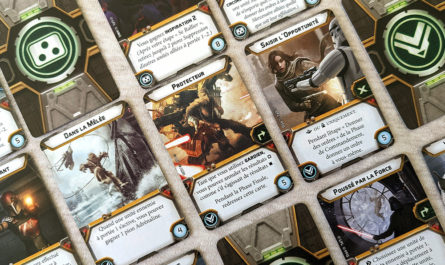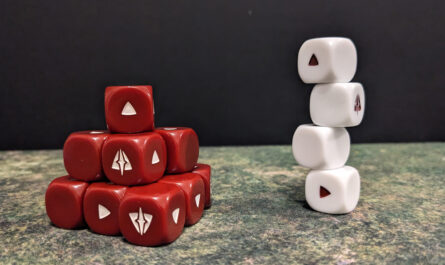If you play asymmetric competitive games, you’ve probably already heard of ‘meta’. But what is the meta? How is it formed? Should you consider the meta before starting a tournament?
What is the metagame?
The metagame is the set of strategies and practices to be adopted to achieve the goal of the game in a given context. In a certain way, the meta dictates tacit rules to encourage victory.
Some people say that ‘META’ is an acronym for ‘Most Effective Tactics Available’. Although the acronym has the merit of accurately summarising the concept, it is etymologically false. Meta is a prefix of Greek origin meaning “beyond, after”. The meta-game therefore implies that one game hides another, that there is a game beyond the game, which transcends it. And in this case, it’s nothing more than an intellectual puzzle. One in which the key is to find the most effective strategy, taking into account the strategies of the other players and the context in which the game is evolving. This thinking takes place outside the game and can play a major role in the hobby, particularly in collectible card games.
In practical terms, what does meta mean?
In practical terms, players line up the best cards or miniatures of the moment in an optimal configuration. However, this does not necessarily mean that weaker cards/miniatures are excluded from the game. As long as they provide valuable assistance to the overall strategy or counter threats from the meta, these units/miniatures are viable.
Illustrations
In Magic The Gathering
Any format that includes the card “Lightning bolt” is not a suitable environment for creature cards with a toughness of 3 or less. Their life expectancy is too low for these creatures to be considered “viable”. They can be struck by lightning at any time (given that Lightning is an instant card) and at minimal cost to the opponent (a single red mana). In such a format, Lightning dictates part of the meta, virtually removing from the deckbuilding exercise any cards not resistant enough to it.
In Star Wars Legion
The arrival of the Pykes in 2022 was remarkable. This unit was packed with powerful keywords for just 40 points. The icing on the cake was that all factions could hire the services of these mercenaries. With such advantages, it was unthinkable not to line it up on the table. Players therefore began to build army lists around this unit, concentrating their strategy on generating numerous Dodge tokens. In this way, the increased defence was a predominant element in the meta of the second half of 2022. This forced opponents to use units capable of breaking through the Pykes’ defences, and units that didn’t excel in this area were left by the wayside…
How is the meta formed?
A metagame is likely to appear in most asymmetric competitive games. When such games are launched, the meta is still unknown. It is the players who, acquiring experience and a deeper understanding of the game as they play it, will gradually identify the game’s winning strategies. In short: a gameplay emerges. The meta is validated when the Nash equilibrium is reached. In other words, a situation in which none of the players can find a better game strategy, given the strategies chosen by the other players.
When does it change?
This depends on the type of game, its popularity and whether developers keep a close eye on how their game evolves. Collectible card games are more likely to see their meta change several times a year, thanks to the quarterly release of new sets. In miniatures games such as Star Wars Legion, each update of the RRG generally involves the appearance of a new meta. Finally, if no parameters changes ever, the meta may be definitive. This never bodes well for the survival of the game from a competitive point of view.
So the meta is closely monitored by the designers, whose aim is to ensure that the game is balanced and always worth playing. If it isn’t, players risk abandoning it. Either out of boredom, or fed up with the injustice of facing unbeatable opposing armies/decks. The game designers therefore ensure that the meta is regularly modified, so that no dominant strategy remains in the limelight for too long (and sometimes unfairly).
Who creates it?
Although the game’s developer may be at the origin of the meta, their role is more one of regulator. They can try to push it in a particular direction, without any guarantee of success. In fact, the developer will never really control the meta-game for a logistical reason: the more parameters there are to take into account in a game, the more tests are needed to identify the consequences of a change, however small. A game publisher does not have the resources to carry out tests on such a scale, however large. That’s why the identification of the meta is left to the players.
Anecdote
Wizard of The Coast, the publisher behind Magic The Gathering, was looking to perfect its mulligan. A mulligan is when players are allowed to draw a new hand at the start of a game in exchange for a penalty. Although this may seem like a harmless act, several types of penalty can be imagined and their impact on the rest of the game can have enormous consequences, particularly by serving as a catalyst for powerful combos. Unable to measure the real impact of the new mulligan it had devised, WotC decided to carry out a full-scale trial phase during Mythic Championship II, a tournament held in the English capital. Validated during the competition, the London Mulligan became the standard and replaced its predecessor, the Paris Mulligan.
How is the meta modified?
Game developers have a number of ways of deconstructing the dominant strategies: publishing new cards or miniatures, changing the game rules, adapting the cost of certain units or abilities, etc. As soon as a game parameter is modified, the meta is called into question.
When is it important?
The importance of meta is felt at a high competitive level. After a certain level of experience, the best players can no longer distinguish themselves on a purely technical level: everyone knows the rules of the game perfectly and attention errors are extremely rare. What separates these players is their understanding of the meta and their approach to it. At this level, integrating the meta into your strategic thinking is an essential element for victory.
How can I find out the current meta of my game?
It’s not easy, because the meta is not tangible and fluctuates over time. You can consult the lists of armies or decks that perform well at major tournaments to find out. Discuss them with other players to understand the strengths and weaknesses of such lists. The most effective way is to play against different players, from all walks of life, to understand each other’s approaches.
Don’t forget that the meta is defined by what other players play. And this can be misleading: if you only play within your circle of friends with limited resources, you’re playing in a biased environment that doesn’t reflect the reality of the game. For example, if your opponents never play X units, you will never implement an anti-X strategy, which could be essential in major tournaments.
Additional note
- A card or miniature may be at its best during a given meta, but then fall by the wayside during the next meta. The reverse is also true.



